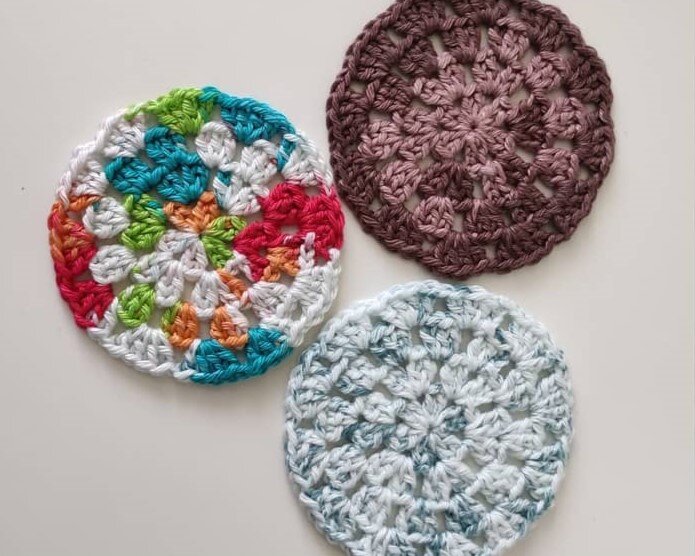
There’s nothing quite like the satisfaction of creating something beautiful and functional with your own two hands. Crochet coasters are the perfect blend of crafty and useful, offering a pop of handmade charm to any coffee table or desk. Whether you’re a seasoned crocheter or a newcomer to the craft, this free pattern for creating your own crochet coasters is the perfect afternoon project to add a touch of cozy to your home decor. Also, crocheting coasters is a great way to use up leftover yarn from some bigger projects.
Materials Needed
- Yarn. I used cotton yarn, but you may want to choose something – there is some other options below.
- Crochet hook. I have 3.5mm
- Scissors
- Embroidery needle
Yarn choice for crochet coasters
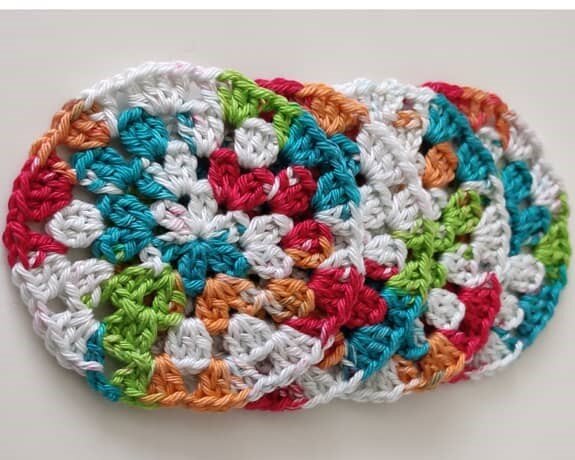
Yarn choice is critical when it comes to crocheting functional items like coasters. Since coasters are meant to protect your furniture from hot or cold beverages, the yarn should be able to absorb moisture and withstand heat without melting or losing shape. Here’s a deeper dive into yarn selections:
Cotton Yarn
Cotton is the gold standard for coasters because it possesses high absorbency, which is exactly what you want when you’re placing a sweaty glass on it. It’s also durable, which means it can be washed frequently without the fibers degrading too quickly.
- Mercerized Cotton: This is cotton yarn that has been treated to give it a lustrous appearance and to strengthen it. It can make your coasters look shiny and feel smooth, and is often available in a vibrant array of colors.
- Organic Cotton: For those who are environmentally conscious, organic cotton yarn is a fantastic choice. It’s produced without the use of harmful chemicals, which is better for the earth and your home.
- Recycled Cotton Yarn: Eco-friendly and sustainable, recycled cotton yarn is made from cotton fabric scraps. The texture can be unique and it’s a great way to contribute to a circular economy.
Bamboo Yarn
Bamboo yarn is another natural fiber that’s gaining popularity for its absorbency and silky texture. It’s a renewable resource and has natural antibacterial properties, which can be an added bonus for items like coasters that may encounter spills.
Linen Yarn
Linen yarn, made from the flax plant, is another excellent choice for coasters. It’s known for its strength and durability, and it also has a natural look and feel that can add a touch of rustic elegance to your coaster set.
Wool Yarn
While not as absorbent as cotton, wool has its own set of benefits. It’s naturally heat-resistant, which can protect surfaces from hot drinks. Wool felted coasters are especially effective because the felting process creates a dense fabric that’s quite protective. However, wool is less resistant to stains and not as easy to clean as cotton.
Other Considerations
Blends: Yarn blends can offer the best of multiple fibers. For instance, a cotton-bamboo blend will have the softness of bamboo with the strength and absorbency of cotton. Similarly, a cotton-linen blend can provide a robust texture with good absorbency. Just ensure there is no synthetic yarns caught in the mix.
Weight and Texture: The weight of the yarn also impacts the final product. For coasters, a worsted or aran weight is typically recommended because it’s thick enough to provide protection but not so bulky that the coaster becomes unwieldy. Textured yarns can add a decorative element to your coasters, but keep in mind that highly textured yarns may be more difficult to clean.
Colorfastness: This is a crucial factor for items that will be washed frequently or may have liquids spilled on them. Ensure the yarn you choose is colorfast to avoid colors bleeding during a wash or when the coaster gets wet.
When choosing yarn for your crochet coasters, think about the practical aspects as well as the aesthetic ones. You probably do not want to use any of the synthetic as those do not handle heat well – which is essential quality for any coaster. The perfect yarn will not only look good and match your decor but will also serve its purpose effectively and stand up to regular use and washing.
Abbreviations (US Terms)
- Ch – chain
- SC – single crochet
- DC – double crochet
- BPDC – back post double crochet
- DTR – double treble crochet
- TR – treble crochet
- SL ST – slip stitch
Crochet Coaster Pattern
Begin with a magic ring.
Round 1: Ch3 (counts as a Double Crochet), DC in MR. (Ch1, 2 DC into MR) repeat this four more times, Ch1. Join with SLST into the 3rd chain of the initial stitch.
Round 2: SLST to Ch1, Ch3 (counts as a DC), (DC + Ch1 + 2 DC) in the same space. *Ch1, (2 DC + Ch1 + 2 DC) in next space. Repeat till the end. Ch1. Join with SLST into the 3rd chain of the initial stitch.
Round 3: SLST to Ch1, Ch3 (counts as a DC), 2 DC in the same space, *Ch1, 3 DC in next space – repeat till the end of the round. Ch1. Join with SLST into the 3rd chain of the initial stitch.
Round 4: SLST to Ch1, Ch3 (counts as DC), 3 DC in the same space, *Ch1, 4 DC in next space – repeat till the end of the round. Ch1. Join with SLST into the 3rd chain of the initial stitch.
Finishing: Cut the yarn, leaving a tail long enough to weave in. Pull the yarn through the last loop on your hook to secure it. Using your yarn needle, weave in the ends on the backside of the coaster to hide them.
Now it is time for blocking our newly made coaster.
Crochet Chart
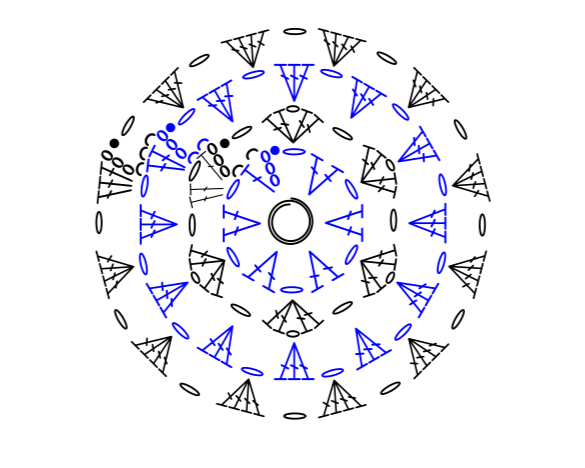
If you prefer a crochet charts – here is the one for you. Check how it was made: How to make best Crochet Chart?
Blocking finished crochet coasters
Blocking is a finishing technique used in crochet and knitting that helps to shape and set your work to its final dimensions and appearance. It can be particularly useful for projects like crochet coasters, where a flat, even shape is desirable for both aesthetic and functional purposes. Let’s delve into the details and benefits of blocking, as well as the different methods you can use.
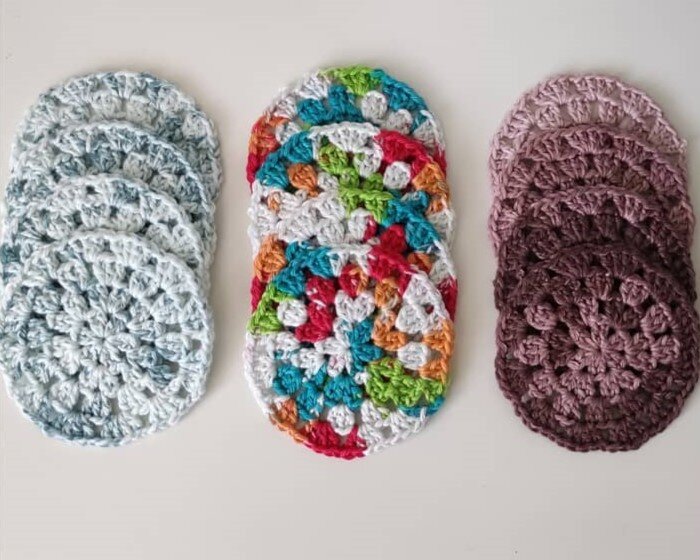
Benefits of Blocking Crochet Coasters
- Evens Out Stitches: Blocking can help smooth out uneven stitches, giving your crochet work a more uniform and professional look.
- Shapes Edges: It’s perfect for straightening edges and corners, ensuring that your coasters lay flat and are perfectly square or circular, as intended.
- Sets Size: It allows you to stretch your project to the exact size specified in the pattern or to your preference.
- Enhances Pattern Details: If your coaster design has intricate lacework or textural stitch patterns, blocking will open up these stitches and show off the detail.
Blocking Methods
There are several methods of blocking, and the one you choose may depend on the type of yarn used and the degree of shaping your coasters need.
- Wet Blocking: This method involves soaking the crochet item in water until it’s fully saturated, gently squeezing out the excess water (without wringing), and then pinning it into shape on a blocking board, foam tiles, or even a towel. It’s the most common method for cotton and other natural fibers.
- Steam Blocking: For steam blocking, you pin the coaster to a blocking board and then use a steam iron to hover over the fabric, allowing the steam to penetrate the fibers. This method is ideal for fibers that may not react well to being fully submerged in water or for projects that only need light blocking.
- Spray Blocking: Similar to wet blocking, but instead of soaking the coaster, you pin it into shape first and then use a spray bottle to mist it with water until it’s damp. This can be a gentler method for fibers that don’t need heavy blocking.
Blocking Tips
- Use the Right Surface: Invest in a blocking board with gridlines for easy alignment, or use foam puzzle mats or towels as an alternative.
- Measure for Consistency: If you’re making a set of coasters, use a ruler or measuring tape to ensure that each one is blocked to the same size.
- Use Rust-Proof Pins: Especially important when wet blocking, make sure to use pins that won’t leave rust spots on your coasters.
- Allow to Dry Completely: Be patient and let the coasters dry fully before removing them from the blocking surface to ensure they retain their shape.
- Synthetic Fibers Caution: Be cautious when blocking synthetic fibers, as high heat can melt or distort them. Always use a low heat setting and avoid direct contact if using steam.
After blocking, your crochet coasters should lay flat and even, with a shape that holds even when they’re picked up or moved. This step, while it may seem time-consuming, can dramatically enhance the finished look of your crochet projects and is well worth the effort for items that will be used and seen frequently.
Variations and Tips
- For a seasonal touch, choose colors to match holidays or themed parties.
- To make a larger coaster, simply add more rounds, increasing the number of stitches as needed to keep the work flat.
- Experiment with textured stitches such as the bobble or puff stitch for a tactile feel.
Crochet Coasters – Video tutorial
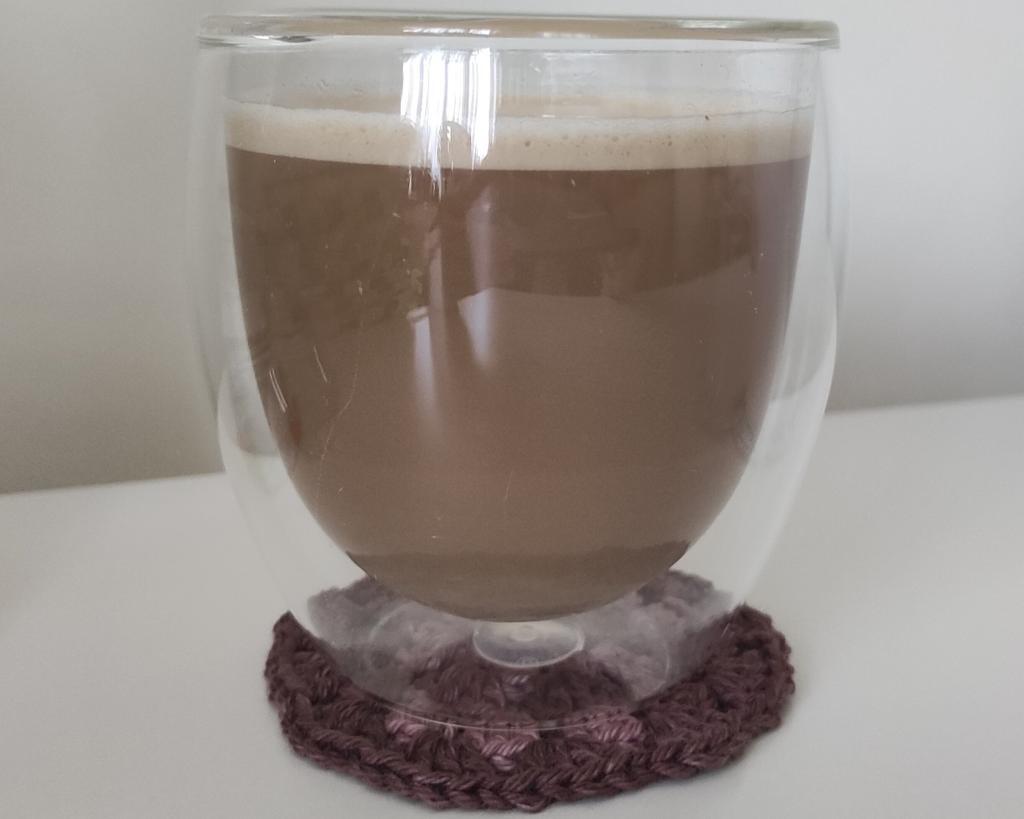
Check our free video tutorial on how to crochet coasters on YouTube – How to Crochet Coasters | Crochet Tutorial.
Crochet coasters are a delightful way to protect your surfaces while adding a bit of handmade charm to your living space. They make thoughtful gifts and are an excellent way to use up yarn scraps. With this free crochet coaster pattern, you can create a set for every season or occasion. Happy crocheting, and may your mugs always have a cozy place to land!
Check our other free mandala pattern here – Mandala “Pineapple Lilly” – Free Pattern. Make your own hair clips with out free pattern – Handmade Bloom: Crochet Hair Clip Free Pattern!